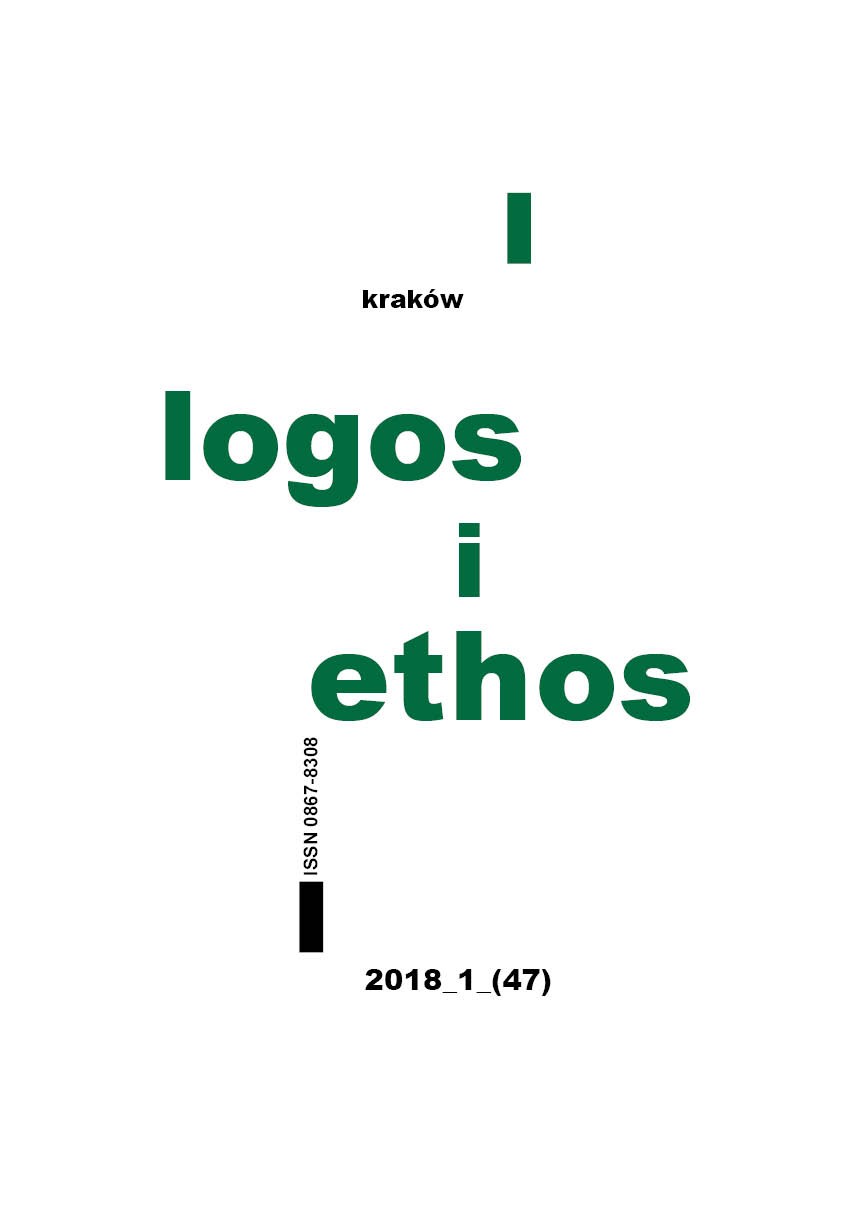Framing Neuroethical Praxis: Wojtyła’s Metaphysical Subject and its Modernist Cartesian Variants
DOI:
https://doi.org/10.15633/lie.2555Słowa kluczowe:
Metaphysical subject, neuroethics, bioethics, humanum suppositum, posthumanism, Wojtyła, Heidegger, extended mind theory, integration, theology of the bodyAbstrakt
Numerous neuroethical quandaries today mark concerns over the normative propriety of corporal intervention in the nervous system. At the center of the debates is the question of how the human subject is understood. Accounts influenced by Cartesian metaphysics separate the subject into his immaterial and material manifestations, yielding ethical approaches that devalue the body and neural architecture. Contemporary neuroscience, on the one hand, proposes that the subject is purely a physiological creation, whereas posthumanism privileges the isolated ego on the other; both, thereby, validate an arbitrary neuroethical praxis. By anchoring neuroethics in the metaphysical subject Wojtyła proposes a fundamental corrective to these metaethical approaches, and the promise of a new praxis for corporal intervention in the brain.
Bibliografia
Alon U., An Introduction to Systems Biology, Design Principles of Biological Circuits, Boca Raton 2007.
Bechtel W., Explicating Top-down Causation Using Networks and Dynamics, Oxford 2017.
Bickle J., Reducing Mind to Molecular Pathways: Explicating the Reductionism Implicit in Current Cellular and Molecular Neuroscience, “Synthese” 151 (2006) no. 3, p. 411–434.
Bostrom N., In Defense of Posthuman Dignity, “Bioethics” 19 (2005) no. 3, p. 202–214.
Braillard P., Systems Biology and the Mechanistic Framework, “History and Philosophy of the Life Sciences” 32 (2010) no. 1, p. 43–62.
Burgos J. M., The Method of Karol Wojtyła: A Way Between Phenomenology, Personalism and Metaphysics, “Analecta Husserliana” 104 (2009), p. 107–129.
Capra F., Luisi P. L., A Systems View of Life, Cambridge 2014.
Chandler D., The World of Attachment? The Post-humanist Challenge to Freedom and Necessity, “Millennium: Journal of International Studies” 41 (2013) issue 3, p. 516–534.
Clark N., Person and Being, Marquette 1993.
Craver C., Physical Law and Explanation in the Hodgkin and Huxley Model of the Action Potential, “Philosophy of Science” 75 (2008) no. 5, p. 1022–1033.
Damasio A., Self Comes to Mind: Constructing the Conscious Brain, New York 2012.
Esfeld M., Quantum Enganglement and a Metaphysics of Relations, “Studies History Philosophy Modern Physics” 35 (2004), p. 601–617.
Friston K., Free Energy and Global Dynamics, in: Principles of Brain Dynamics, eds. M. I. Rabinovich, K. J. Friston, P. Varona, Boston 2013, p. 261–292.
Gallagher S., How the Body Shapes the Mind, Oxford 2005.
Gillett C., Reduction and Emergence in Science and Philosophy, Cambridge 2016.
Hart Y., Antebi Y., Mayo A., Friedman N., Alon U., Design Principles of Cell Circuits with Paradoxical Components, “Proceedings of the National Academy of Sciences of the United States of America” 109 (2012) no. 21, p. 8346–8351.
Holub G., The Human Subject and its Interiority: Karol Wojtyła and the Crisis in Philosophical Anthropology, “Quien” 4 (2016), p. 47–66.
Hooker C., Interaction and Bio-cognitive Order, “Synthese” 166 (2008), p. 513–546.
John Paul II, Pope, Man and Woman: He Created Them. A Theology of the Body, trans. M. Waldstein, Boston 2006.
John Paul II, Pope, The Splendor of Truth = Veritatis Splendor: Encyclical Letter, Boston 1993.
Kaufman S., The Oigins of Order: Self-Organization and Selection in Evolution, Oxford 1993.
Kelso S., Dynamic Patterns: The Self-Organization of Brain and Behavior, Cambridge 1995.
Latour B., We Have Never Been Modern, Cambridge 1993.
Laughlin R., Physics, Emergence, and the Connectome, „Neuron” 83 (2014) no. 6, p. 1253–1255.
Levy N., Neuroethics and the Extended Mind, in: The Oxford Handbook of Neuroethics, eds. J. Iles, B. Sahakian, Oxford 2011, p. 285–294.
Maturana H. R., Varela F., De maquinas y seres vivos. Autopoiesis: La organizacion de lo vivo, Santiago de Chile 1979.
Morange M., Les Secrets du Vivant: Contre la Pensee unique en Biologie, Paris 2005.
Moreno A., Mossio M., Biological Autonomy: a Philosophical and Theoretical Enquiry, Berlin 2015.
Onishi B., Information, Bodies, and Heidegger: Ttracing Visions of the Posthuman, “Sophia” 50 (2011) issue 1, p. 101–112.
Paul VI, Pope, Humanae Vitae. Encyclical Letter, Vatican City 1968.
Reiner P., The Rise in Neuroessentialism, in: The Oxford Handbook of Neuroethics, eds. J. Iles, B. Sahakian, Oxford 2011, p. 161–176.
Rae G., Heidegger’s Influence on Posthumanism: The Destruction of Metaphysics, Technology, and the Overcoming of Anthropocentrism, “History Human Sciences” 27 (2014) no. 1, p. 51–69.
Roskies A., Mental Alchemy, http://www.theneuroethicsblog.com/2016/08/mental-alchemy_23.html
Smith L., Stability and Flexibility in Development, in: Toward a Unified Theory of Development, eds. J. P. Spencer, M. S. C. Thomas, J. L. McClelland, Oxford 2009.
Toward a Unified Theory of Development, eds. J. P. Spencer, M. S. C. Thomas, J. L. McClelland, Oxford 2009.
Wojtyła K., Man in the Field of Responsibility, Vatican City 1991.
Pobrania
Opublikowane
Numer
Dział
Licencja
W kwestii praw autorskich obowiązują następujące zasady:
1. Twórca oświadcza, że służą mu prawa autorskie do utworu i że nie są ograniczone w zakresie objętym niniejszym oświadczeniem oraz że utwór jest dziełem oryginalnym i nie narusza praw autorskich innych osób.
2. Twórca zezwala Uniwersytetowi Papieskiemu Jana Pawła II w Krakowie na nieodpłatne, niewyłączne i nieograniczone w czasie korzystanie z utworu, to jest:
- utrwalanie i zwielokrotnianie: wytwarzanie egzemplarzy utworu techniką drukarską, reprograficzną, zapisu magnetycznego oraz techniką cyfrową;
- obrotu oryginałem albo egzemplarzami, na których utwór utrwalono (wprowadzanie do obrotu, użyczenie lub najem oryginału albo egzemplarzy, publiczne wystawienie, wyświetlenie, a także publiczne udostępnianie utworu w taki sposób, aby każdy mógł mieć do niego dostęp w miejscu i w czasie przez siebie wybranym);
- włączenie utworu w skład utworu zbiorowego;
- udzielanie przez Uniwersytet Papieski Jana Pawła II w Krakowie sublicencji Creative Commons Uznanie autorstwa 4.0 Międzynarodowe (CC BY 4.0)
3. Uniwersytet Papieski Jana Pawła II w Krakowie udostępnia utwór na Platformie Czasopism należącej do uczelni, na licencji Creative Commons Uznanie autorstwa 4.0 Międzynarodowe (CC BY 4.0). Tym samym uprawnia wszystkich zainteresowanych do korzystania z utworu pod następującymi warunkami:
- zostanie podany autor i tytuł utworu,
- zostanie podane miejsce publikacji (tytuł czasopisma i adres internetowy do oryginalnie opublikowanego utworu).

